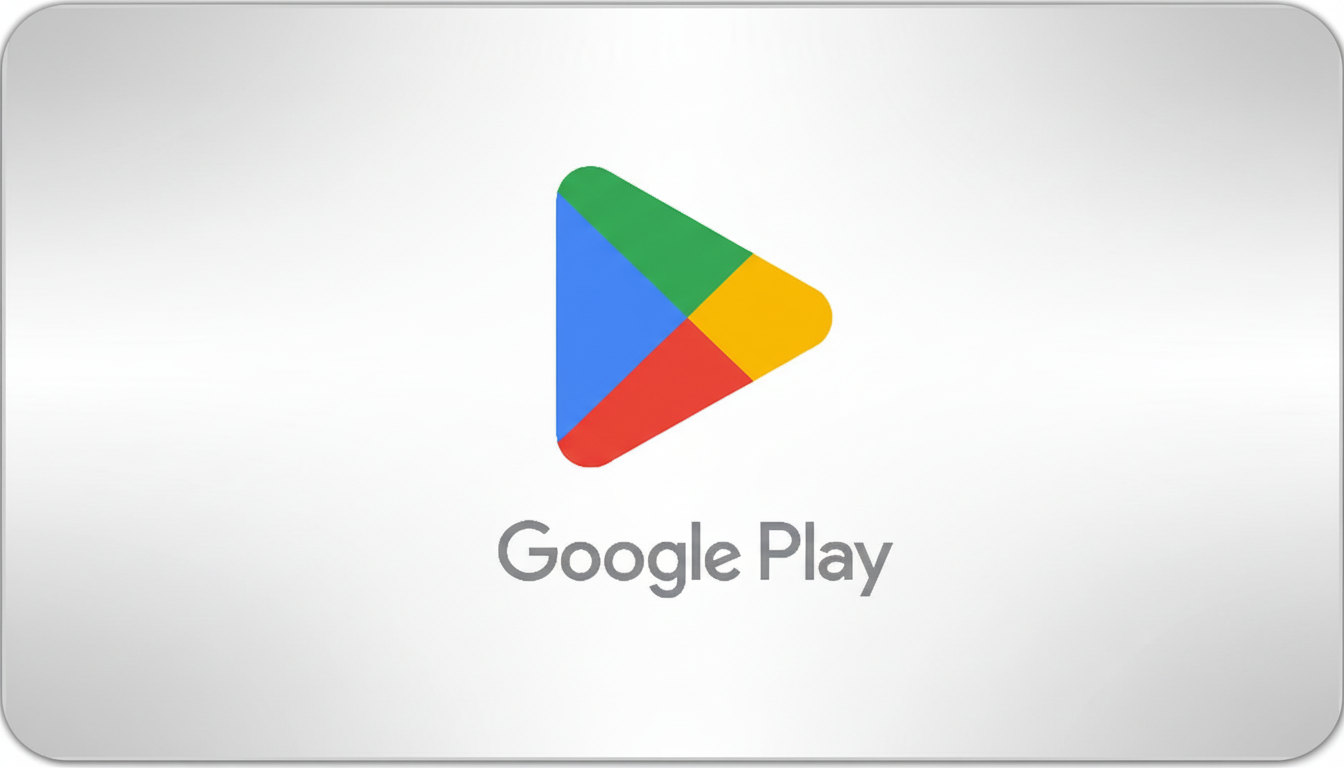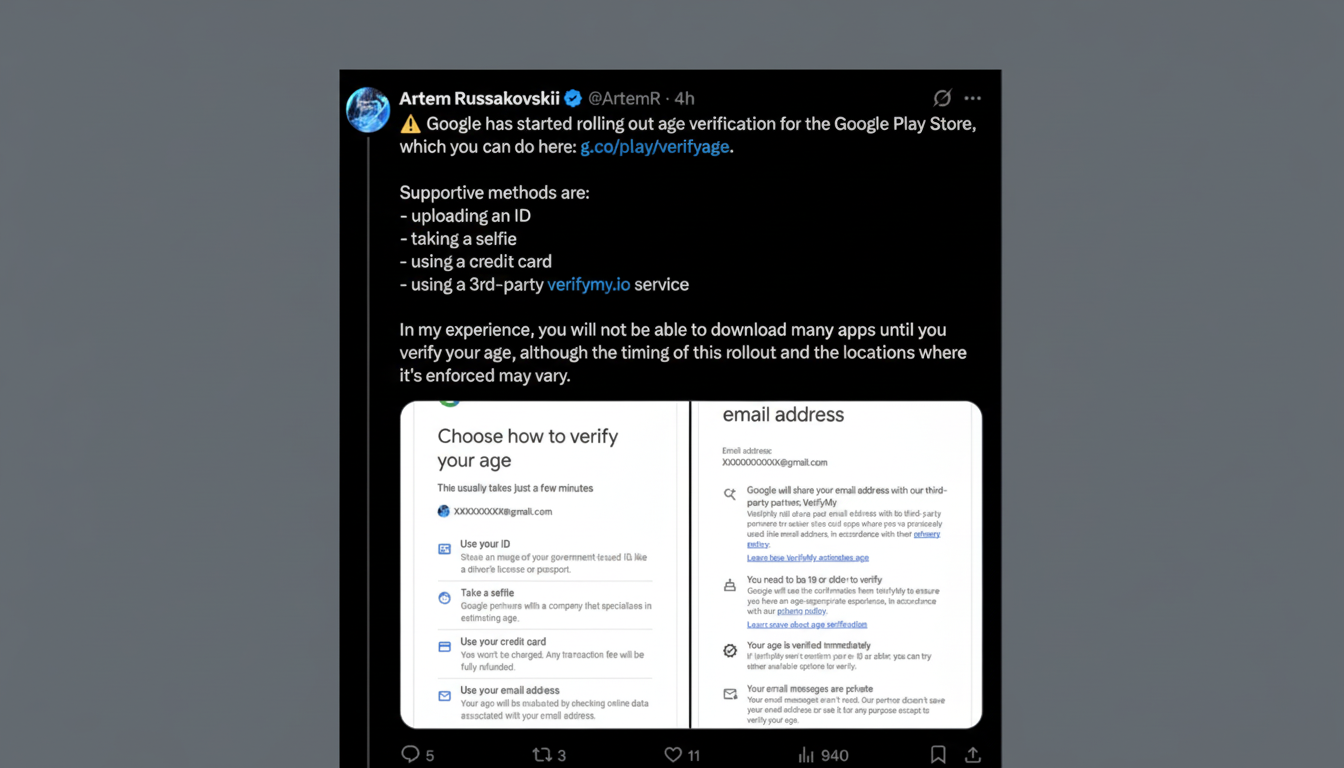Google Play is starting to require that users prove their age before downloading many apps, as part of its effort to ensure that minors don’t have access to disturbing or harmful content — such as hate group info or depictions of suicide. The move reflects Google’s bigger push into age assurance across its services, after it tested the waters with video platforms previously amid new regulatory pressure to protect children in cyberspace.
What Triggers the New Google Play Age Verification Prompt
Users encounter the verification pop-up when they attempt to download apps rated for adults or with adult themes such as dating, gambling or contests with real-money prizes. Triggers could also be apps with user-generated content or that have been flagged by Google’s policy teams as being aimed at children and therefore need to comply with the restrictions for handling data from age-restricted users.
- What Triggers the New Google Play Age Verification Prompt
- How Google Play’s New Age Verification Process Works
- If Google’s Age Estimation Is Off the Mark for Adults
- Privacy and Data Handling in Google Play Age Checks
- Why Google Is Introducing Strict Age Verification on Play
- What Google Play Users Can Do Right Now to Prepare

Play’s app ratings use the IARC system already, yet ratings aren’t enough to stop a determined teen from tapping Install. The new step requires an age check before the download can continue, and users say unavailable titles may not be accessible until they verify their ages.
How Google Play’s New Age Verification Process Works
Once you see the prompt, Google offers a brief explanation and then lists some options. Verification is usually only a matter of minutes and can be done in any of the following ways (depending on your location):
- Credit or debit card check: In this case, Google makes a small temporary charge to confirm that the cardholder is an adult. After the check, the charge is refunded.
- Government ID upload: You can submit a photograph of a driver’s license, passport or other government-issued ID. Photos are screened to verify your age, and the process can be completed in a matter of seconds.
- AI-powered age estimation: Google or a partner ID-verification provider processes a video selfie or still image of your face in some countries to determine whether you meet the minimum age requirement. If the confidence score is high, it unlocks the download without saving your accurate birth date.
If the system can’t be certain of your age with an estimate, you will have to use another form of authentication that’s a bit more authoritative — say, an ID document.
Family Link can impose more steps on accounts controlled by a parent or guardian.
If Google’s Age Estimation Is Off the Mark for Adults
Google is not perfect at guessing ages, and it concedes that some adults will be underestimated. In those situations, the alternative is a direct proof method. It will usually be the fastest way to handle a mismatch by providing an ID. If you think a move was wrong, you can try again using an alternative method, or let Google know through your account settings.
Edge cases will emerge as a staff burden. A small contingent of potential adult users will be unable to use your flow, and this may affect conversion rates for mature titles. Transparent in-app messaging and proper IARC ratings can be used to limit surprises.

Privacy and Data Handling in Google Play Age Checks
Age verification deals with sensitive information, so Google is emphasizing its privacy protections. The company says images and biometric signals are encrypted while being carried and in storage, processed only to verify age, and stored for a short period before they are deleted. For estimating techniques, the partner does not produce a continuous biometric profile but a yes/no result or an age band.
It’s a challenge to balance safety and privacy, a balance still being debated in the industry. Regulators in the UK and EU have called for “proportionate” age assurance, while in the U.S. discussions often revolve around child protection and parental control. Other platform operators have sounded the alarm about the dangers of accumulating even more personal data as they introduce their own protections.
Why Google Is Introducing Strict Age Verification on Play
Beyond goals, there is a rising tide of regulation. The EU’s Digital Services framework also seeks enhanced protections for minors. Content services are expected to use age assurance when the risks of the content are high, under the UK’s Age Appropriate Design Code. In the United States, federal and state officials have also looked closely at how platforms manage teen data and access to mature features.
Google Play already has restrictions on content categories including gambling, sexual content and paid contests. The new checks add an additional layer of enforcement to verify that the person doing the tapping is old enough, not just the account profile. It syncs with Family Link controls to help parents set age-appropriate guidelines for kids.
What Google Play Users Can Do Right Now to Prepare
If you add a bunch of apps with adult ratings, doing the pre-verification within your Google account can keep things moving later. Select the approach that works best for you: a quick check of your card, an ID upload for peace of mind, or an age estimate where possible. Make sure your Play country settings are correct, as availability can differ by country.
If you are a parent, use Family Link to enable content filters based on IARC ratings and verify your own age — it can help grease the wheels when granting approval for borderline teen requests. For developers, revisit your app’s target age and content descriptors in the Play Console; overestimating your target audience may result in enforcement or multiple verification gates.
The bottom line: Google Play’s age-checks update brings the store into compliance with an industrywide evolution in verifying which users are old enough to use a set of mature features. It tacks on an extra minute to the install experience for some users, but it’s about ready to become the new standard for adult-only apps on Android.

